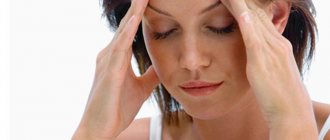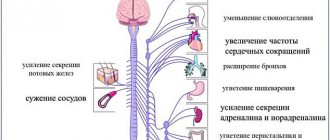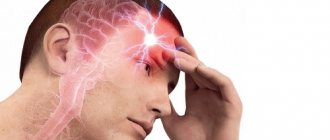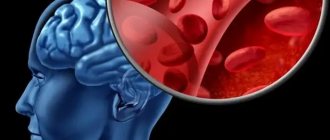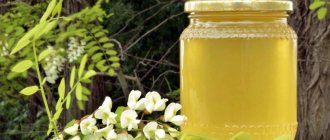Vegetovascular dystonia (VSD) is not an independent disease and is characterized by disorders in the nervous system. In this case, dysfunctions can be observed in all important organs. Unpleasant symptoms develop in the cardiac and vascular systems. A person begins to feel severe discomfort and experience a general deterioration in well-being, which makes it difficult for him to continue leading his usual lifestyle. Therefore, it is extremely important to begin timely treatment of vegetative-vascular dystonia with proven and folk remedies.
Basic recommendations for home treatment
Treatment of VSD with folk remedies can give good results. It is important that most herbal components do not have side effects, which many medications have. Due to this, the healing process proceeds faster and with positive dynamics.
In addition to home treatment, a mandatory stage of therapy is to perform special exercises that strengthen the internal system and saturate tissues and cells with an additional dose of oxygen. It is also recommended to take walks in the fresh air every day.
As for the physical side of treatment, attention should be paid to the neck muscles and mobility of the spinal column. Be sure to devote several minutes a day to breathing exercises. Of the existing sports for vegetative-vascular dystonia, the most useful are swimming, gentle gymnastics or aerobics, as well as athletics, but without the use of strength elements.
When adding medicinal plants and herbs to the complex treatment of disorders of the vegetative system, you must first familiarize yourself with the available contraindications. You also need to take into account the individual intolerance of the body to one or another plant component. This approach will allow you to receive not only effective, but also safe treatment at home.
Vegetative-vascular dystonia - treatment with folk remedies and prevention.
Vegetative-vascular dystonia, abbreviated as VSD, (synonyms are neurocirculatory dystonia, autonomic dysfunction) is a malfunction in the autonomic nervous system, which regulates the activity and functions of all internal organs, endocrine and exocrine glands, lymphatic and blood vessels. Let's take a closer look at why vegetative-vascular dystonia appears, treatment with folk remedies and prevention of the disease.
With VSD, disturbances can occur with the following functions: breathing, sweating, blood circulation, metabolism, digestion, reproductive. Experts believe that this condition is not a separate pathology, but only a signal and a set of individual signs associated with disturbances in the functioning of the central nervous system. The clinical picture of VSD may have signs of cardiac, vascular, psychological, neurological, and digestive diseases.
Depending on the condition of the arteries and pressure, autonomic dysfunction is divided into 3 types:
- VSD of the hypertensive type;
- VSD of hypotonic type;
- VSD of mixed type.
Vegetative-vascular dystonia - symptoms
The main symptoms of the disease are:
- difficulty breathing (shortness of breath, feeling of lack of oxygen, unexpectedly deep breaths, rapid or difficult breathing);
- dizziness;
- fatigue, weakness, decreased performance;
- pain in the heart area;
- fluctuations in venous and blood pressure, both in the direction of increasing and decreasing;
- slowing or, conversely, increased heart rate, a feeling of freezing of the heart muscle;
- excessive sweating;
- insomnia ;
- cold or numb extremities;
- disorders in the gastrointestinal tract (diarrhea, flatulence, nausea, heartburn, constipation);
- loss of appetite;
- frequent urination, itching and pain in the genital area;
- unmotivated panic attacks;
- anxiety;
- dependence on weather conditions (meteodependence);
- redness of the skin;
- headache ;
- noise in ears;
- tendency to faint.
Causes of vegetative-vascular dystonia
The main factor in the development of the disease is the loss of vascular tone, in which the autonomic nervous system has less control over the expansion and contraction of all arteries.
Risk factors for this condition:
- hormonal imbalance in the body during puberty, pregnancy, breastfeeding, menopause, taking hormonal medications;
- exacerbation of endocrine diseases;
- climate change;
- sedentary lifestyle (hypodynamia);
- congenital pathologies of the central nervous system;
- diseases of the spine (osteochondrosis, radiculitis, hernia);
- hereditary predisposition;
- chronic neurosis, overexertion, stress;
- alcohol abuse;
- smoking;
- allergic reactions;
- brain diseases and injuries;
- chronic diseases (peptic ulcer, gastritis, hepatitis, diabetes mellitus, bronchial asthma, thyroid dysfunction, heart and kidney disease, etc.);
- inflammatory processes occurring in the body.
The psychological factor in the occurrence of neurocirculatory dystonia, according to statistical data, is the most common. The overloads that modern people experience lead to exhaustion and weakening of the entire body and a decrease in its protective and adaptive functions.
Treatment of vegetative-vascular dystonia
Pathology therapy is aimed at improving the patient’s quality of life and reducing or eliminating painful symptoms. An integrated approach to the problem makes it possible to normalize the functioning of all vital systems and organs, restore the activity of the autonomic nervous system, improve the functioning of the body’s adaptive systems, tidy up energy and tone, eliminate insomnia and anxiety, reduce manifestations of nervousness, etc.
After a comprehensive examination of the patient, the first step is to eliminate the cause of the pathology. Then treatment is carried out to heal existing manifestations and prevent the progression of vegetative-vascular dystonia. The duration and features of therapy directly depend on the patient’s condition and numerous factors (type of VSD, gender, age, temperament, etc.). Most often, treatment includes the prescription of medications, including homeopathic medications, therapeutic massage procedures, magnetic laser therapy, manual therapy, electromyostimulation, darsonvalization, mud, air and sea baths.
Prevention
To avoid problems with the nervous system and blood vessels, you should adhere to a healthy lifestyle, the main instructions of which are:
- a rational, balanced diet with no junk food (salty, spicy, fried, flour, sweet, fast food, etc.);
- a full night's rest (sleep should last at least 8 hours in a well-ventilated area);
- playing sports (required: 10-15-minute morning exercises and visiting the sports section 2-3 times a week);
- daily 2-3 hour walks in the fresh air;
- harmonization of work activity and rest;
- giving up bad habits.
Vegetative-vascular dystonia - treatment with folk remedies
Hibiscus. Sudanese rose is a unique plant with a powerful composition. Its peculiarity is that when drinking a hot drink, blood pressure increases, while chilled red tea reduces blood pressure. 2-3 large dried hibiscus flowers are steamed with 0.4 liters of boiling water and left for about 5-10 minutes in a teapot. If desired, add natural bee honey, ice cubes or sugar to the drink.
Calming charges. To restore the harmonious state of the nervous system, it is useful to drink herbal infusions, which you can purchase at the pharmacy or prepare yourself. Here is one of them: mix valerian root, cumin, motherwort, dill and calendula in equal proportions. Pour 1 teaspoon of the mixture into 150 ml of boiling water, leave for 2 hours and strain. Take the medicine 5 times a day, 15 ml for a month. It is not recommended to skip, since regularity of administration directly affects the effectiveness of treatment.
Needles. Phytoncides of coniferous trees normalize blood pressure, optimize mood, improve emotional background, strengthen the psyche, promote quality night's rest, and have a beneficial effect on the cardiovascular system. Baths with pine concentrate and essential oils of maritime pine, cedar, juniper, and spruce are useful. Walking in the forest and relaxing at a dacha or recreation center located in a forest area also significantly improves the condition of patients with VSD.
The most effective recipes
To cope with vegetative-vascular dystonia on your own and at home, you can prepare a healing decoction. To do this, in one container you need to mix a spoonful of caraway seeds and sweet clover herb, two spoons of oat grains and rose hips, and the same amount of dried black currant berries. Add four tablespoons of hawthorn, immortelle and lemon balm, as well as six tablespoons of marsh cudweed.
To enhance the therapeutic effect, add three tablespoons of motherwort and calendula flowers, as well as a small spoon of fragrant rue, to the remaining ingredients. The resulting composition is poured into two cups of hot water and infused for several minutes. The finished medicine is drunk up to six times a day, 30 ml. And it helps a lot when it comes to hypertensive dystonia.
If the disease provokes insomnia and restless sleep, then you can use aromatherapy. An ordinary piece of gauze should be folded in three layers and fern, bay leaves and hop cones should be poured into it. All components are tied into a bag, which is best hung in the bedroom above your head. You can just put it near the bed. The aroma emanating from a homemade bag will have a calming effect.
A fragrant bag of herbs will help with insomnia due to VSD
There is another recipe for a healthy drink that will relieve blood pressure surges, eliminate anxiety and improve overall well-being. It is prepared from chamomile, elecampane root, St. John's wort and honey. All ingredients are mixed in equal quantities, crushed and poured with slightly cooled boiling water. When the decoction is infused, honey is added to it and 120 ml is consumed orally in the morning before breakfast. The entire course will take one month, but then the person will not experience symptoms of VSD.
If you feel weakness and increased fatigue, you need to mix strawberry leaves, prickly tartar, birch and nettle leaves, elecampane and knotweed, as well as rose hips. When all the ingredients are mixed, you need to take three large spoons and brew them in 500 ml of boiling water. Take home medicine in the morning, afternoon and evening, 50 ml. This should be done at least forty minutes before a meal. The decoction itself can be stored in the refrigerator, but no more than three days.
- How to treat atherosclerosis with folk remedies
Additionally, you need to create the right diet, rich in foods that contain potassium. These are bananas and baked potatoes, apricots and eggplants, spinach and parsley, cabbage and milk.
Traditional medicine in the fight against VSD
To cope with VSD, you can try to cleanse your body of waste and toxins.
Clay will help with this. A solution is prepared from it, which is then used every day for a week. Take a glass of warm water for one tablespoon of clay. Gradually, the dosage of the main component must be reduced.
When symptoms such as migraine and severe headache occur against the background of VSD, then a therapeutic effect can be obtained from mustard baths. You need to dilute five tablespoons of mustard powder in warm water. You need to take this bath for seven minutes. After which you need to immediately wrap yourself in a clean sheet and lie down under the blanket.
Baths with mustard powder will relieve headaches due to VSD
It is also recommended to drink chamomile and valerian root tea before bed. But if you have a severe headache in the morning and your blood pressure drops, then you need to brew strong tea and add a spoonful of cognac to it.
Treatment of vegetative disease at home can be based on the use of vegetable fruits. In this case, beets show an excellent result. It will be enough to cut this root vegetable in half and immediately apply two halves to your temples. Then you need to sit comfortably and remain in such a calm state for at least 40 minutes. It is very useful to drink beet juice, diluting it with cucumber and carrot juice. The drink is drunk immediately after preparation.
The following herbs and plants have a good therapeutic effect for vegetative-vascular dystonia:
- motherwort and valerian;
- dill and hawthorn;
- calendula and cumin;
- barberry and peppermint.
Usually, two weeks of using such healing components is enough for your health to improve and your VSD to subside. The only thing that needs to be observed during this treatment is the recommended dosage, which is not recommended to be exceeded.
There are medicinal herbal preparations specially selected for men and women, taking into account the characteristics of the body, hormonal and vascular systems. For the treatment of VSD in men, you can prepare a mixture of the following components:
- dog-rose fruit;
- liquorice root;
- St. John's wort and valerian;
- mistletoe grass;
- Rhodiola and Leuzea;
- angelica root.
Most of all, rose hips and licorice root are taken, but angelica, leuzea and rhodiola are taken in reduced quantities. To prepare the women's collection, you need to mix viburnum fruits and angelica root (three tablespoons each). Add to them licorice and dandelion root, leuzea and rhodiola, rosehip and nettle, knotweed and wormwood in equal quantities.
- How to treat atherosclerosis of the lower extremities with folk remedies
All components must be ground in a blender. Take two tablespoons of the resulting mixture and pour 500 ml of water into them. The entire infusion is poured into a thermos and left there overnight. And in the morning, you can drink the finished drink instead of tea, 100 ml three times a day. The duration of the entire course will be eight weeks. In some cases, six weeks may be sufficient.
Traditional treatment of dystonia
- 2 tbsp. l. valerian root, 1 cup dill seeds, mix, pour 1000 ml of boiling water, brew in a thermos for 24 hours. Then strain and take 1 tbsp 3 times a day on an empty stomach. l.
- 25 ml peppermint tincture, 50 ml eucalyptus tincture, 100 ml motherwort tincture, 100 ml hawthorn tincture, 100 ml valerian tincture, 100 ml evasive peony, 10 clove buds, mix, infuse for 2 weeks in a place protected from sunlight, from shaking the contents for a while. The product must be consumed on an empty stomach 3 times a day, 20 drops, adding a small amount of water.
- 100 g birch buds, 100 g immortelle, 100 g St. John's wort, 100 g chamomile, mix and chop. Let's take 1 tbsp. l. collection, pour 500 ml of boiling water, leave in a thermos for 4 hours. Then filter and take 200 ml at night, adding 1 tsp. honey And in the morning you need to drink the rest of the infusion on an empty stomach.
- Pour 5 tbsp. l. crushed pine needles 700 ml of boiling water, leave in a thermos overnight. Filter and take as tea.
- 0.5 shares of juniper fruits, 0.5 shares of calamus rhizomes, 2 shares of rose hips, 2 shares of yarrow herb, 1 share of strawberry leaves, 1 share of speedwell herb, 1 share of St. John's wort herb, 1 share of chicory flowers, mix. Let's take 2 tbsp. l. collection, add 500 ml of boiling water, leave in a thermos overnight. We filter and take the infusion in 3 doses on an empty stomach.
- 1 tbsp. l. hawthorn flowers, 1 tbsp. l. mint, 1 tbsp. l. sweet clover, 1 tbsp. l. periwinkle, chop, mix, add 1000 ml of boiling water, brew for 30 minutes. Then filter and take 100 ml 2 times a day for 2 months.
- Blood thinning with folk remedies. We use equal parts of mint, sweet clover, linden blossom, leaves and young shoots of hazel, horse chestnut, and mix. Let's take 1 tbsp. l. collection, add 500 ml of boiling water, leave for 40 minutes and take 100 ml at night.
- Pour 250 ml boiling water 1 tbsp. l. crushed leaves and stems of colza, leave for 30 minutes and take 70 ml 3 times a day. Mix lemon peel crushed in a meat grinder, a glass of honey, and 1 glass of onion juice. Take 1 dess. on an empty stomach. l. 3 times a day.
- Pour 500 ml of boiling water into 1 tbsp. l. buckwheat flowers, leave for 2 hours. Then filter and take 100 ml 3 times a day. Pour 1000 ml of boiling water 2 tbsp. l. chopped mulberry branches, brew in a thermos overnight. Take 200 ml 3 times a day on an empty stomach.
The classic recipe also works well for vegetative-vascular dystonia - warm milk with honey before bed. This drink calms and relaxes. In addition, you need to help the body replenish its reserves of potassium (potatoes, cabbage), vitamin C (ascorbic acid, citrus fruits), zinc and chromium (vitamin complexes). In order not to get sick, strengthen your blood vessels by hardening, proper nutrition, physical exercise - and no vegetative-vascular dystonia will be scary for you!
Be healthy! Herbal treatment will help cure diseases and gain health!
